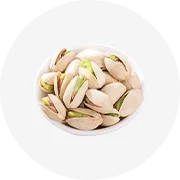
SUNTAK Manufacturer Minty Fresh Thai Candy Spearmint Candies Sugar Free Delight Custom Sweets Snack Candy



















Embark on a sweet journey through the vibrant world of Thai candy, where tradition meets innovation and every bite tells a story. This ultimate guide unveils the trends, tastes, and trade secrets of Thailand's confectionery, from the sticky rice and coconut symphony of Kao Tom Mud to the modern twists of gummy candies enriched with vitamins. Discover how these treats are more than just indulgences; they're cultural artifacts that celebrate local ingredients and craftsmanship. Whether you're a connoisseur of the classics or a seeker of new flavors, prepare to explore the sweet landscape of Thai candy and its burgeoning presence on the global stage.

Thai sweets, known for their variety and rich history, are a testament to Thailand's love for confectionery. Traditional Thai desserts like Kao Tom Mud, with its chewy texture and coconut milk, sticky rice, and varied fillings, reflect the cultural significance of pairing and unity. Kanom Tuay, another classic, offers a dual-layered experience with a sweet base and a creamy, slightly salty top. The wedding-favored Kanom Sai Sai, steamed in banana leaves, showcases the use of local ingredients like coconut and its milk. Bite-sized Ta Koh, with its two layers and potential for natural color infusion from Pandan or Butterfly pea, represents the Thai knack for aesthetic appeal. Kanom Krok, reminiscent of small pancakes, is versatile with toppings like corn or taro, while the increasingly rare Kanom Piak Poon stands out with its use of limewater and natural colorants. These sweets are not just treats but are woven into the fabric of Thai markets and celebrations.
The confectionery industry has observed a shift in consumer preferences, with a growing demand for gummy candies among younger demographics, such as teenagers and children. This trend is attributed to the versatility of gummies, which can be molded into various shapes and forms, appealing to this age group.
In response to these changing tastes, the industry is exploring the development of gummy candies that incorporate unexpected functional benefits. This includes the addition of nutrients like vitamins C and D, or calcium, catering to a consumer base that is looking for confectionery with added health benefits.
Moreover, the confectionery market is witnessing a trend towards unique and unusual flavors. Innovators are tapping into this by creating innovative flavor combinations that reflect local Thai tastes, such as guava with salt and spice, and tamarind with sugar and chili. These flavors are designed to evoke the experience of a Thai fruit stall, offering consumers a taste of ASEAN culture.
While there is a push for sugar-free or reduced sugar options in Western markets, the industry acknowledges the challenges associated with producing such variants, especially considering the cost implications and the current economic climate. Nevertheless, there is a market for premium, health-conscious products and efforts are being made to cater to regions with higher spending power through targeted sugar-free offerings.
Thai candy, particularly tamarind candy known as 'Makham Gao', is a classic example of the country's rich confectionery tradition. The key ingredient, tamarind, is often enjoyed fresh but can also be transformed into a delightful sweet treat. This transformation is achieved by coating the tamarind with a mixture of sugar, salt, and chili, creating a harmonious balance of sweet, salty, spicy, and sour flavors that epitomize Thai culinary philosophy.
The process of making this candy can vary from simple methods, such as rolling fresh tamarind in the coating mixture, to more involved techniques that include boiling the tamarind with sugar to form little logs before coating. This versatility in preparation methods showcases the adaptability of Thai candy making to different levels of culinary expertise.
In addition to tamarind, other sour fruits like green mango are also used in Thai candy, indicating a preference for tart base ingredients that are then layered with complex flavor profiles. The materials used in creating these candies are a testament to the resourcefulness and creativity inherent in Thai confectionery practices.

Alibaba.com has emerged as a significant platform for showcasing the diversity of Thai candy, catering to a global audience with a penchant for these sweet delights. The website lists an extensive array of Thai candies, from traditional flavors to modern twists, reflecting the rich tapestry of Thailand's confectionery landscape. It serves as a bridge connecting Thai candy manufacturers to international buyers, highlighting the variety of candies such as gummy snacks, sour worms, and fruit-flavored jellies. The platform's role extends beyond just a marketplace; it's a window into the evolving trends of the Thai candy industry, where suppliers can present their innovative products, like the 3D fruit-shaped gummies or coconut-flavored treats, to a broader market. Alibaba.com's influence in the industry is evident in the way it enables suppliers to reach a worldwide audience, offering bulk purchasing options and a plethora of choices that appeal to different tastes and preferences. This accessibility makes it an indispensable tool for businesses looking to source Thai candies, whether for retail, wholesale, or private labeling.
When exploring the diverse offerings of Thai candy on Alibaba.com, buyers are greeted with a variety of choices, including the unique Salty & Sour Thai Tamarind Candy. This particular candy exemplifies the intricate balance of flavors that Thai confectionery is known for, blending ripe dried tamarind with a mix of chili powder, sugar, and salt for a complex tangy, sour, and spicy taste profile. For those looking to purchase in larger quantities, options to buy in bulk are available, offering the potential for savings.
In navigating the marketplace, it's beneficial for buyers to consider the ingredients and origin of products. For instance, the Thai Tamarind Candy is straightforward in its composition, containing tamarind, sugar, and salt, and proudly declares its Thai origin. This transparency is crucial for buyers who prioritize natural ingredients and authenticity.
Additionally, understanding the logistics, such as shipping times, is essential. Products like the Thai Tamarind Candy are typically ready to ship within a few business days, ensuring that buyers can plan their inventory needs accordingly. While exploring Alibaba.com, buyers should also take note of related products such as Tamarind Paste or Fresh Sweet Tamarind, which can complement their purchase and provide a broader range of options to their clientele.
Sellers on the global B2B platform distinguish themselves by offering a diverse array of Thai candies that cater to both traditional tastes and modern preferences. They provide a variety of shapes, sizes, and colors, aiming to appeal to a broad audience. Innovations in the candy industry are evident, with products featuring unique elements such as popping effects, hidden centers, or color-changing properties to enhance the consumer experience. Suppliers are attentive to health trends, incorporating health-conscious options that use natural ingredients or sugar substitutes. This adaptability to consumer demands and the ability to offer customized experiences are key factors that help sellers stand out in the competitive online marketplace.
In addition to product variety, sellers leverage packaging innovations to attract buyers. They understand that the visual appeal of Thai candy can be as important as the taste, and they invest in individual and combination packaging that is suitable for different occasions. By doing so, they not only cater to individual consumers but also to those looking to purchase in bulk for events or holidays. The focus on safety and quality is also a significant trade secret, with suppliers ensuring that their confections meet international standards, which is a crucial consideration for global buyers.

In Thailand, food products, including candies, are categorized into different groups based on risk levels, which directly impacts the quality and safety standards that manufacturers must adhere to. For candies falling under 'Specially controlled food' and 'Standardised food', stringent quality standards are set, including specific labelling and production processes. These categories include high-risk items and those with medium risk levels, such as certain confectioneries and food supplements, which are tightly controlled. Additionally, 'Food with labelling' and 'General food' groups have their own set of regulations ensuring that product owners are responsible for compliance with regulations concerning formula, labelling, safety, and quality standards. Mandated 'good manufacturing practices' for food production are essential for manufacturers to follow. These practices are updated regularly, and adherence is crucial for maintaining product safety and quality in the candy industry.
In the realm of Thai candy, packaging is not just a protective layer but a canvas for innovation and brand storytelling. The Thailand confectionery market predominantly utilizes flexible packaging, which offers versatility and convenience. This type of packaging is lightweight, reducing transportation costs and environmental impact. Rigid plastics follow, providing durability and preserving the freshness of candies. Paper & board materials are also significant, reflecting an eco-friendly aspect that aligns with global sustainability trends. Rigid metal, although less common, is used for certain products, adding a premium feel to the packaging. These materials are chosen for their ability to maintain the quality of the confectionery while also catering to the aesthetic and functional demands of the market.
In the dynamic market of Thai candy, leveraging trends is crucial for business buyers looking to capitalize on opportunities. The industry is seeing a shift towards 'healthier option' strategies, with a focus on sugar-free and functional products. This trend caters to health-conscious consumers who desire indulgence without compromising on wellness. Innovation remains key in the mature sugar confectionery landscape of Thailand. Even in well-established subcategories, there is room for growth, as demonstrated by the introduction of new product variations to capture market share. For instance, novel offerings in pastilles, gummies, jellies, and chews are emerging to meet diverse consumer preferences.
Distribution channels are also evolving, with traditional trade and convenience stores being pivotal for reaching the target demographics, which vary from children to adults depending on the product type. The frequent, low-value purchases characteristic of the candy market suggest a steady demand, underlining the importance of strategic placement and availability. Business buyers on the global B2B platform can tap into these trends by sourcing products that align with the current shift towards healthier options and by offering a variety of new and traditional flavors to cater to a broad customer base. Understanding these market dynamics is essential for making informed decisions and recognizing profitable opportunities within the Thai candy sector.
In conclusion, Thai candy represents a fusion of time-honored traditions and contemporary trends, a testament to Thailand's culinary ingenuity. From the rich, multi-layered textures to the health-conscious innovations, Thai sweets cater to a diverse palette. The global B2B platform has been instrumental in propelling these delights onto the global market, offering buyers a treasure trove of options, from sour tamarind candies to novel gummy creations. As the industry evolves, maintaining quality and safety standards remains paramount, with oversight ensuring consumer trust. For business buyers, the key to success lies in leveraging the latest trends, such as the shift towards healthier options and novel flavor profiles, to meet the dynamic demands of candy aficionados worldwide. The Thai candy industry, rich in flavor and culture, invites both connoisseurs and curious explorers to savor its offerings and partake in its sweet, ongoing story.